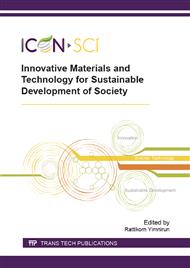[1]
A. Brandenburg, R. Polzius, F. Bier, U. Bilitewski, and E. Wagner, Direct observation of affinity reactions by reflected-mode operation of integrated optical grating coupler, Sens. Actuators B 30(1), 55–59 (1996).
DOI: 10.1016/0925-4005(95)01747-j
Google Scholar
[2]
V.S. -Y. Lin, K. Motesharei, K. -P.S. Dancil, M.J. Sailor, M.R. Ghadiri, A porous silicon-based optical interferometric biosensor, Science, 1997, 278, 840-843.
DOI: 10.1126/science.278.5339.840
Google Scholar
[3]
Leo L. Chan, Brian T. Cunningham, Member IEEE, Peter Y. Li, Derek Puff, A Self-Referencing Method for Microplate Label-Free Photonic-Crystal Biosensors, IEEE Sensors Journal, 2006, 6, 1551-1556.
DOI: 10.1109/jsen.2006.884547
Google Scholar
[4]
C.E. Jordan, R.M. Corn, Surface plasmon resonance imaging measurements of electrostatic biopolymer adsorption onto chemically modified gold surfaces, Anal Chem, 1997, 69, 1449-1456.
DOI: 10.1021/ac961012z
Google Scholar
[5]
F. Morhard, J. Pipper, R. Dahint, M. Grunze, Immobilization of antibodies in micropatterns for cell detection by optical diffraction, Sensors and Actuators B, 2000, 70, 232-242.
DOI: 10.1016/s0925-4005(00)00574-8
Google Scholar
[6]
G. Jin, P. Tengvall, I. Lundstrom, H. Arwin, A biosensor concept based on imaging ellipsometry for visualization of biomolecular interactions, Anal Biochem, 1995, 232, 69-72.
DOI: 10.1006/abio.1995.9959
Google Scholar
[7]
C. Brian, P. Li, L. Bo, P. Jane, Colorimetric resonant reflection as a direct biochemical assay technique, Sensors and Actuators B, 2002, 81, 316-328.
DOI: 10.1016/s0925-4005(01)00976-5
Google Scholar
[8]
Germain Chartier. Introduction to Optics, Springer, 2005, 299-322.
Google Scholar
[9]
R. Magnusson, S.S. Wang. New principle for optical filters. Appl Phy Lett, 1992, 61, 1022-1024.
Google Scholar
[10]
Naphat Chathirat, Nithi Atthi, Charndet Hruanun, Amporn Poyai, Suthisa Leasen, Tanakorn Osotchan, and Jose H. Hodak A Micrograting Sensor for DNA Hybridization and Antibody Human Serum Albumin-Antigen Human Serum Albumin Interaction Experiments, Japanese Journal of Applied Physics (JJAP), Vol. 50, 1 . (2010).
DOI: 10.7567/jjap.50.01bk01
Google Scholar


